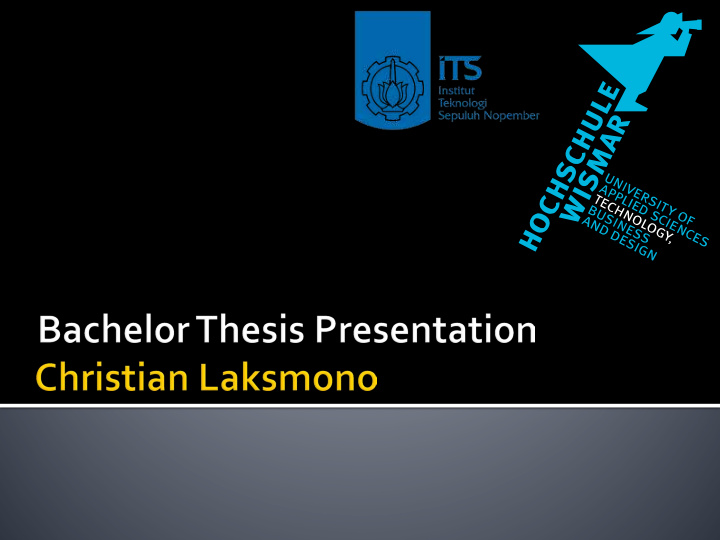



MARINE ENVIRONMENT ENGINEERING TECHNOLOGY THERMODYNAMIC ANALYSIS INFLUENCE
CO2 NOx SOx Soot Natural Gas BioFuel Methane, etc Inc NOx Dropping Sud EGTS Dry Wet EGR SCR Scrubber Scrubber WHRS
Christian Laksmono
Characterisation of different technical and operational systems to 1. meet the SO x and NO x emission limits Detailed description of influence of different exhaust gas treatment 2. systems regarding the heat recovery potential Appointment of exhaust gas heat recovery potential in an example 3. Evaluation of results 4. TASK Hypothesis 1. Different EGTS Installment = Different WHRS Potential 2. Scrubber Influence WHRS 3. WHRS + EGTS = Improvable
1. Pipe Calculation 2. Pipe Calculation (using Program) 3. Chemical Losses Calculation 4. Losses in Scrubber Piping 5. Scrubbing System Losses 6. Mass Flow Rate Water : Gas
EGTS does not affect WHRS
Recommended 94,71 o C to be used on WHRS systems The number of requirement for SOx Scrubber is same with Class’ Rules. With the chance to improve it. Will be discussed next. 40 o C to be used on WHRS systems 38 o C to be used on WHRS systems since 300 250 o Celsius or more difference because the degree is needed for NOx Scrubber EGTS Coolant temperature which is too high
Using Better Heat Resistance Material
Shorter Pipe to Reduce Heat Loss
Putting Consideration into Chemical Products
Using the Acid-Free Material on Scrubber Piping System No Regulation for Minimum Temperature.. Acid Rain -> Non-Acid Material Reducing 180 degree to 70 degree We can boost up WHRS from 11% to 18.26% If this possible than EGTS installation will boost up WHRS possibility
Christian Laksmono @2016. Rostock
Recommend
More recommend